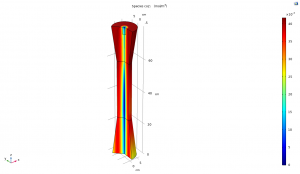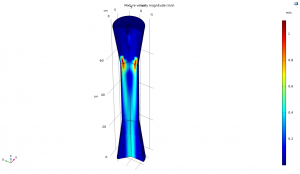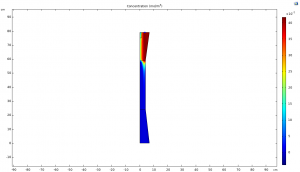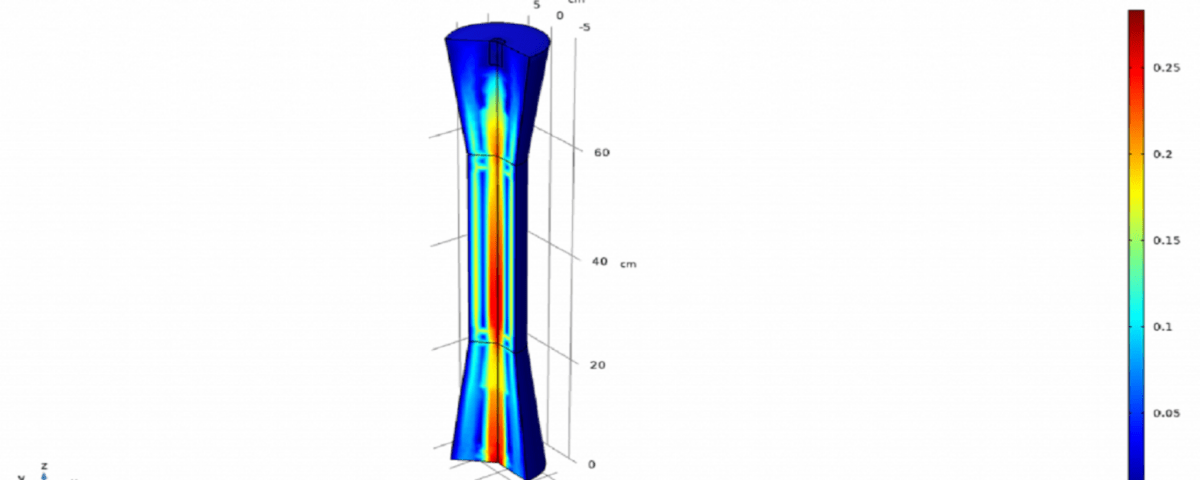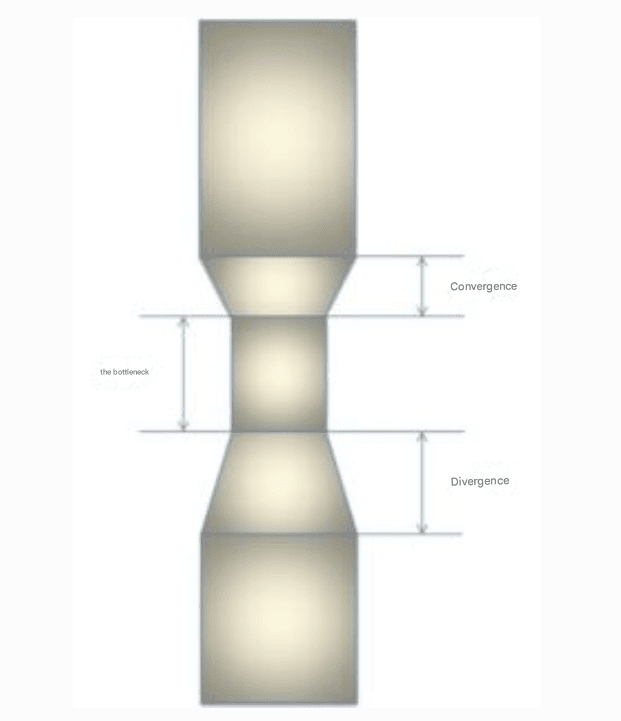Introduction
In this project (see figure below), a 2D model is developed to separate carbon dioxide from a gas stream using a nickel nanofluid solvent in a Venturi scrubber. Axial diffusion in the Venturi scrubber is considered. It should be noted that the main source of modeling is based on a research article.
Venturi scrubbers consist of three main parts: the converging section, the throat section, and the diverging section (Figure 1). The inlet gas first enters the converging section. In this section, according to Bernoulli’s equation, the gas velocity increases as the cross-sectional area decreases. The liquid is injected into the gas at the beginning of the throat or at the beginning of the converging section. Due to the very high velocity, the gas passing through the throat tears the liquid into very small droplets upon contact. The highest removal of gaseous pollutants and fine particles occurs inside the throat, where the fine liquid droplets are mixed within the gas. Finally, the gas flow enters the diverging section where its velocity decreases due to the increase in cross-sectional area.
Assumptions for Simulation with COMSOL
- Unsteady Gas Flow: The gas flow into the system is considered to be unsteady.
- Euler-Euler Model: The Euler-Euler model is employed for the primary modeling (nickel nanoparticles).
- Isothermal Conditions: The process operates under isothermal conditions.
- Fick’s Law: Fick’s law is used to model the absorption of carbon dioxide.
- Ideal Gas Mixture: The incoming gas mixture is assumed to behave as an ideal gas.
- Gas Composition: For the model with nickel nanofluid, the inlet gas composition is air and carbon dioxide.
- Dry Conditions: Both systems are modeled under dry operating conditions.
- Nickel Nanoparticles: The properties of nickel nanoparticles used for adsorption are obtained from a reference laboratory study.
This project simulates the separation of carbon dioxide from air using COMSOL Multiphysics. The figure below presents a portion of the simulation results.This project is not only a report but also an educational video.
